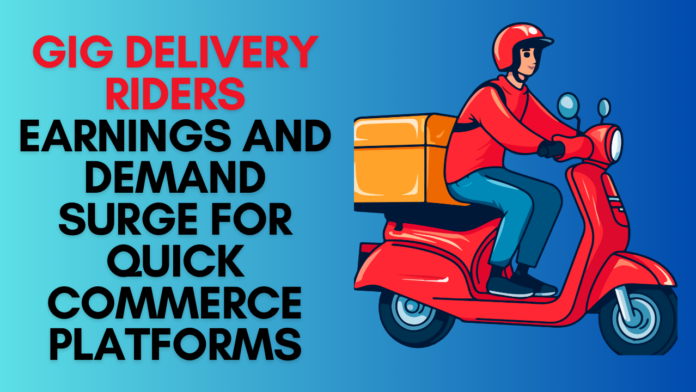In India, where cultural diversity is celebrated with fervor year-round, the convenience of 10-minute delivery apps like Blinkit, Swiggy Instamart, and Zepto has become an integral part of daily life. As festive seasons approach, these platforms are expected to see a 40% increase in demand, turning gig delivery workers into some of the busiest individuals of the year.
Gig workers, as defined by Rajat Shahi, former member of the Founders Office at Vahan Inc., are individuals engaged in temporary, flexible jobs facilitated by digital platforms. They operate as independent contractors, performing tasks ranging from food delivery to freelance work. Shahi notes that a significant challenge faced by these workers is the lack of job security. Without guaranteed income or benefits like health insurance and paid leave, gig workers often struggle with financial instability, impacting their mental well-being and long-term planning.
The impact on the industry is significant. While gig work provides companies with flexibility and cost savings, it also leads to high turnover rates, worker dissatisfaction, and legal challenges related to worker classification. These issues threaten to disrupt operations and highlight the need for more sustainable solutions for gig workers.
During peak periods, such as festivals, e-commerce and food delivery platforms are projected to increase their gig workforce by approximately 20%. Currently, quick commerce platforms employ around 300,000 to 400,000 riders, a smaller share compared to the 4-5 million gig riders in the more established e-commerce and food delivery sectors. Notably, two-thirds of these riders are engaged in e-commerce.
Pratyush, a regular user of 10-minute delivery apps, shared his experience with My Startup Tv, expressing satisfaction with the convenience these services offer. He recounted an incident where he ordered medicines and food for his grandmother while away on work, and the order was delivered within 10 minutes, proving immensely helpful for his family.
To meet the surge in demand, many gig workers are anticipating a boost in earnings. In major cities like Bengaluru, Delhi, and Hyderabad, quick commerce delivery workers earn between ₹20 to ₹30 per order, with additional surge benefits and incentives during peak hours. For example, a Swiggy Instamart delivery worker in Hyderabad recently earned a surge benefit of ₹15 per order, while a Blinkit worker in Delhi received ₹13 per order during peak hours. Riders can also earn extra incentives for completing a set number of orders or working specific hours.
Mr. Vishnu, a 28-year-old gig worker with over two years of experience, commented on the job’s flexibility compared to traditional corporate roles. He also highlighted that their chances of higher earnings of and bonuses during festivals but also acknowledged the demanding nature of the job. Despite the financial incentives, some workers describe the conditions as “unrealistic and back-breaking,” often requiring 12-14 hour shifts to maximize earnings.
As the gig economy continues to expand, addressing these challenges while sustaining the flexibility and efficiency of gig work remains crucial. The festive season, while a boon for earnings, underscores the need for more comprehensive support and recognition for gig workers, whose crucial role is pivotal in meeting the demands of a vibrant and bustling market.




